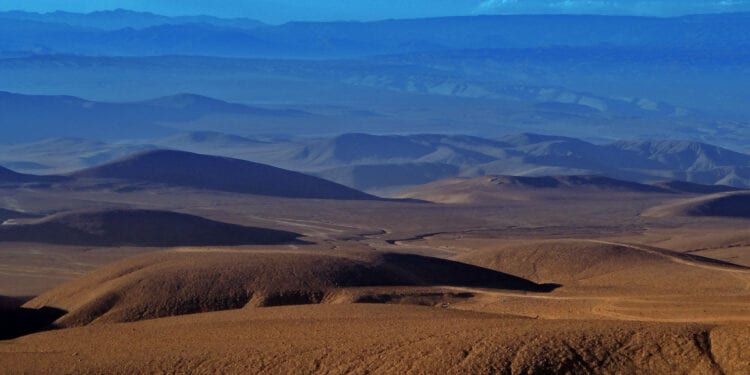Encouraging Initial Assays Received From Cerro De Fierro Drilling
AusQuest Limited (ASX: AQD) has obtained encouraging initial results from a recently completed Reverse Circulation (RC) drilling programme at the Cerro de Fierro Copper Prospect in southern Peru, under the Company’s Strategic Alliance Agreement (SAA) with a wholly-owned subsidiary of South32 Limited.
The programme consisted of 15 RC drill-holes for a total of 5,048m with assay results received so far from the first seven drill-holes with the balance (eight holes) expected in April.
Drilling results to date have reported encouraging copper grades over thicknesses of ~20m to 30m from depths ranging from surface to 50m, in widely spaced drill-holes, highlighting the potential to delineate an extensive zone of shallow copper oxide mineralisation provided continuity of grade can be established by further drilling.
Results have also identified thick zones (>80m) of strong advanced argillic alteration deeper in the profile (beneath the copper oxide layer), suggesting the possibility of nearby porphyry copper mineralisation in addition to the shallow copper oxide layer, and the manto-style copper mineralisation intersected by earlier drilling programmes.
The best copper intersections reported to date occur within drill-holes CDFRC04 (30m @ 0.5% Cu and 5.6g/t Ag from surface) and CDFRC06 (28m @ 0.57% Cu and 9.0g/t Ag from 44m) located approximately 1km apart, suggesting potential to delineate an extensive flat-lying sheet of mineralisation at depths of less than 50 metres.
Managing Director, Graeme Drew, said that results received from other RC drill-holes (CDFRC01, 02 and 07), while not of the same copper grade, continue to support the presence of an extensive shallow dipping sheet(s) of copper oxide (plus silver (Ag)) across a large area of the prospect, given the wide spacing of drill-holes used in this exploratory programme.
Copper continues to preferentially occur within the mafic volcanics (andesites) and is associated with similar alteration geochemistry to the copper mineralisation found during earlier drilling programs completed by the Company, ~1km to the north.
The strong advanced argillic alteration intersected during the current programme is however, a new addition to the prospect and suggests the possibility of at least two separate copper systems in the area.
The advanced argillic alteration is characterised by strong depletion in magnesium (Mg), manganese (Mn), sodium (Na) and zinc (Zn) with enrichment in sulphur (S), molybdenum (Mo) and tellurium (Te), and contains occasional zones of elevated copper (200ppm to 500ppm Cu), typical of a lithocap associated with porphyry copper mineralisation.
A complete assessment of the data will be undertaken by the Company’s consultants once all assay data and TerraSpec data (clay mineralogy) have been received and assessed.
Mr Drew said the presence of broad widths of shallow copper oxide mineralisation intersected over an extensive area was an encouraging development, and the company was looking forward to receiving assays from the remaining eight drill-holes over the coming weeks.
“The possibility of defining a shallow coherent zone of copper oxide mineralisation, coupled with the recognition of a potential lithocap which is often associated with porphyry copper mineralisation, has added an exciting new dimension to this prospect,” he said.
“We look forward to reporting on further results as they become available.”












